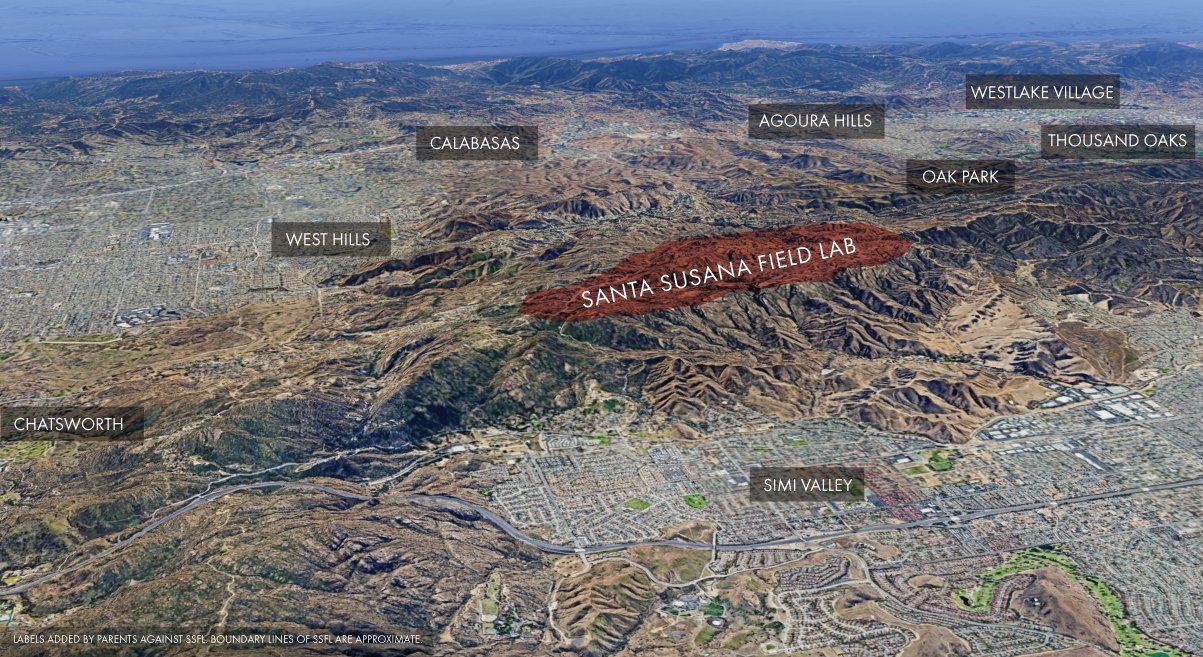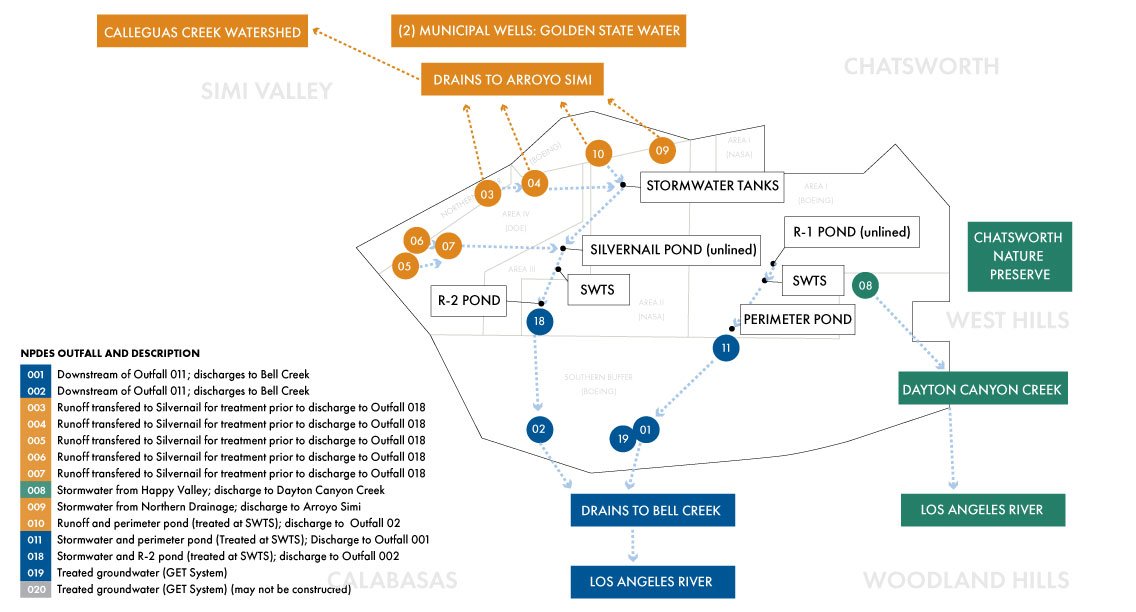PRESS ADVISORY: August 9, 2022
Parents to speak out against the Boeing Company’s plans to pollute Los Angeles River and Ventura County’s drinking water with toxic “forever” chemicals from the Santa Susana Field Lab
On August 11, 2022, the Los Angeles Regional Water Quality Control Board (LARWQCB) will vote on the Boeing Company’s Memorandum of Understanding (MOU). The MOU will determine if Boeing will be required to continue their NPDES stormwater runoff permit that monitors and regulates the amount of contamination that is allowed to flow offsite from the Santa Susana Field Lab (SSFL) and into local watersheds, after Boeing’s incomplete cleanup of the site.
Parents and residents were already outraged about the deal between the Department of Toxic Substances Control (DTSC) and Boeing, erroneously referred to as a “Settlement Agreement,” that dramatically reduced the amount of contaminated soil that Boeing must remediate at the SSFL. An independent watchdog group, Committee to Bridge the Gap, estimates that 90-95% of the toxic soil at the SSFL will be left contaminated onsite, permanently, in the new deal.
Over 310 chemicals of concern have been historically documented at the SSFL, including lead, arsenic, cyanide as well as toxic chemicals. Renowned ecotoxicologist Dr. Frank Hippel reviewed the list of chemicals at the SSFL and said,
“hundreds of different chemicals and toxic metals are elevated at the SSFL… many of the pollutants elevated at the site are known carcinogens or endocrine-disrupting chemicals. Many are highly persistent and can be expected to remain a toxic threat for decades to centuries if not properly remediated.”
The Calleguas Creek Watershed is:
Drinking water in Ventura County. The contamination can disproportionately harm already marginalized and economically disadvantaged communities that can’t afford water filtration systems. These communities are also faced with a lack of access to healthcare.
Percolating into the groundwater. Groundwater is difficult, costly, and extremely slow to remediate.
Irrigating crops, which can contaminate produce grown in Ventura County.
Impacting farmers and farm workers who will be exposed to SSFL contamination while working in the agricultural fields.
Essential to the survival of sensitive and endangered wildlife on and near the SSFL.
Used for recreation, putting people at risk of direct exposure at pools, splash pads, and in sprinklers
En route to the Pacific Ocean, endangering our marine life, ocean, and people.
Sacred to local indigenous tribes.
The MOU proposal is based on the DTSC-Boeing Agreement and falsely claims that after the SSFL cleanup there won’t be any contamination left onsite to pollute rain runoff, and therefore, Boeing shouldn’t be required to maintain their NPDES permit.
“It’s backwards,” says Melissa Bumstead, who began the grassroots group Parents Against SSFL and whose twelve year-old daughter is a two-time cancer survivor.
“Boeing has allowed toxic chemicals from the SSFL to reach local waterways for decades, despite their promises that they wouldn’t. Boeing should have to work hard to prove to the community that it’s completely clean at the SSFL before there’s any talk of removing their NPDES permit. Sure, maybe that’s inconvenient for Boeing, but our children’s health is on the line.”
The contaminated rain runoff from Santa Susana Field Lab reaches the Los Angeles River, Ventura County’s Calleguas Creek Watershed and the Pacific Ocean. The Calleguas Creek Watershed is used for drinking water, water for crop irrigation, recreation, and supports sensitive and endangered wildlife.
Ventura County resident Dr. Martha Brazo-Martinez, mom to three young children and the Community Outreach Coordinator for Friends of Farmworkers said,
“If the MOU passes, our community’s health will always be at risk. Families will worry if their children are safe when they drink water or when they cook, eat, grow or harvest locally grown produce. Every child deserves to be safe when they are playing in water outdoors. Families in Ventura County should not have to worry about toxic chemicals in their water. The Water Board has the moral and ethical obligation to do the right thing and keep the stricter NPDES permit in place until Boeing can prove that the SSFL is completely clean.”
Some of the major flaws in the MOU include:
The MOU assumes there will be no contamination left at the SSFL to pollute rain water runoff after Boeing finishes their cleanup of their property at the SSFL, but an independent review of DTSC-Boeing’s “Settlement Agreement,” shows that 90-95% of Boeing’s contaminated soil will remain after the cleanup. The main premise of the MOU is false and won’t protect residents from dangerous contamination.
The MOU indicates that the Best Management Practices (BMP) would be removed. The BMP are a series of mechanisms currently in use at the SSFL, that help divert contaminated rain water so that it doesn’t flow offsite. Without BMPs in place it’s likely that more even contamination will flow offsite, as the cleanup will have left most of the dangerous chemicals behind.
The MOU calls for extremely limited testing after Boeing completes their insufficient cleanup of their property at the SSFL. Ordinarily, the process would proceed; After a cleanup occurred it would be followed by extensive testing to verify that the cleanup was complete. Next, any BMP measures would be removed, followed by more extensive testing. Finally, after all tests show that the contamination is completely removed, which often spans years or decades, the Water Quality Control Board would consider canceling an NPDES permit. There’s no logic to cancel Boeing’s NPDES permit before any testing is done.
NASA and the Department of Energy (DOE) are the other two parties responsible for the cleanup of their portions of the Santa Susana Field Lab. Currently, the existing NPDES permit is under Boeing but it covers contaminated water from the entire site, including NASA and DOE’s portions where there is extensive radioactive contamination. According to the MOU, Boeing’s NPDES will be removed and Boeing should then make its “best efforts” to “persuade” DOE and NASA to apply for their own NPDES permits. If unsuccessful, NASA and DOE can then apply for a significantly less stringent water runoff permit that will not monitor radioactive contamination in the water flowing offsite.
The Settlement Agreement didn’t go through the CEQA environmental review process which would have exposed the weakened cleanup standards in the agreement. The LARWQCB should vote “NO” the MOU because its contingent on an agreement that didn’t include CEQA.
According to the Settlement Agreement, a “yes” vote on the MOU is required to activate the Settlement Agreement which the DTSC claims is needed because the cleanup “can’t wait.” However, for residents who intend to live in Ventura or Los Angeles County for more than a few years, it doesn’t make sense to rush into a cleanup that allows the vast majority of contamination to remain in place permanently.
###
LARWQCB “MOU” Hearing
When: Thursday, August 11, 2022
Time: 10:00 am (PST)
In-person attendance:
City of Santa Clarita City Hall
23920 Valencia Blvd., #120, Valencia, CA 91355
Registration for virtual attendance: https://us02web.zoom.us/webinar/register/WN_LSbsCG2gT_C1925beCC7wQ
LARWQCB MOU Website: https://www.waterboards.ca.gov/losangeles/santa_susana/SSFL_CompFramework.html
Review of the DTSC-Boeing “Settlement Agreement” and “MOU”






